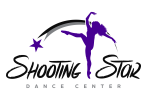This is the follow up to dance and the preschooler which talks about the benefits of dance class for the pre-school aged child.
In part two we will talk about how you can incorporate movement using every day items around the house.
Do you have paper plates and a non carpeted floor? Go ice skating! This helps work on the gliding motion that is not so each for the little ones to feel. They want to pick up their feet and step instead of push off.
Do you have some hula hoops? Make a hop scotch board! For our 2-3 year old friend we like to line up 4 in a row so they practice jumping with 2 feet. Once they hit 4-5 we mix up the patterns sometimes weekly incorporating feet together and apart, diagonals and so much more!
Do you have an non-inflated balloon? Blow it up using your air (not helium) and toss and catch it with your child. The balloon floats slowly down as opposed to a ball (which would work also) giving little eyes time to sight it and work to catch it. Older friends can try to see how many times they can tap it in the air before it hits the ground or you can play volleyball together.
Do you have a shower pouf? You can practice body identification (can you put it on your head? Can you put it on your feet?), and explore different tactile sensations (dabbing spots, gliding strokes etc). We like to hand each child a pouf and after we have explored the shape and the feel ask them what they could do with it. Can you throw it? Can you roll it? Let them lead the exploration.
Lastly do you have a pool noodle? We cut them in three pieces and each child gets a piece. Again after exploring the shape, feel, color and size of the object we talk about what we can do with it and let the children lead the discussion. We have seen rocket ships, microphones, rolling pins, hammers, telescopes and more.
And if you just want to move I suggest you check out our get the wiggles out playlist. Many easy to follow along songs that you can do right in your living room.
Find it here: Get the wiggles out playlist
Got a favorite item for movement exploration? Share it with us in the comments!
